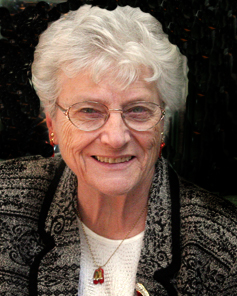
The following article is part of the Diamond Club Member group that began in the January 7, 1943, issue of the Rock County Star Herald. Members of this group consist of persons of age 75 and older.
March 11, 1943
“Can’t agree with you that Luverne’s as good a place as any,” declared William Everett, when someone commented that this part of Minnesota was a pretty fine spot for a home. “I’ll take the west any day. You’ll make two dollars for every one here if you just go about it right.”
That led to the question, “Bill, how did you happen to make Luverne your home, then?”
“Well,” said the old timer, “it was this way. I came here from Doon, Ia. I didn’t know where I was going, but I knew I was going. I went to the hotel to wait between trains and I guess it never came. Some fellow came into the hotel and wanted a man to go to work on a farm. I went to work, and Luverne has been my home ever since. That was in August, 1917.”
Born in Dakota Territory
Mr. Everett isn’t certain just how old he is, but thinks he’ll be 77 on April 21. He was born at Elk Point Union county, Dakota territory either in 1863 or ’64. Records of his birth have since been lost.
There were still Indians and gun-totin’ whites at that time and Hell’s Bend,” the wooded area where the Big Sioux empties into the Missouri, was still a hot spot. “I knew of four fellows who died with their boots on there. Two of them came to Johnny St. Pierre’s cabin one night and he got them both. Johnny St. Pierre was a violinist who played for dances all through the country. He had just come back from a trip to Sioux City, Omaha and Missouri Valley, and two fellows came to get his money. He pulled his .44 before they did. One of them dropped right outside a window — the other was found the next morning at the edge of a wheat field, five or six rods away. As far as I know, that cleaned up Hell’s Bend.”
Saved by an Indian
In those days, there were Indians in that area, but most of them were civilized. He recalls that one time when he was a child of two or three years, two Indians came and asked his mother for something to eat. She refused for some reason or other, and one of the Indians picked him up by the heels and was about to smash his head against the side of the building when his father’s friend, also an Indian, came to his rescue. Several days later Mr. Everett’s father was walking along the river and there came across the body of the Indian with four arrows in his body.
Elk Point was the Gretna Green of the northwest when Mr. Everett was a boy. Being in Dakota territory where there was no marriage license law and where couples would come in droves from Iowa and Nebraksa to tie the nuptial knot.
Father Had Three Trades
Mr. Everett’s father was Abner Everett, a man who had served as an apprentice for 15 years and had learned three different trades. He spent five years learning to be a cabinet maker, earning only 25 cents a month for that period. His first job as an apprentice was making his own tools. After his cabinet apprenticeship, he learned to be a wheelwright, and spent five years as an apprentice in this trade as well. His wages at that time was increased to 50 cents a month. After that, he served as a carpenter’s and joiners apprentice, and then went into business for himself at Elk Point.
The Luverne man did not remain at home after he was nine years of age. He went to work for J. H. Brace, a cattle drover, and for three years, he virtually lived in the saddle, traveling with Mr. Brace wherever he bought cattle. His wages were 25 cents a day, plus board, room and clothing. Within six months after he had entered Mr. Brace’s employ, he knew the name of every man who lived in Union, Spink, Clay and Yankton counties, and on the darkest night could drive to the ranch of any person one could name. In those days there weren’t roads — only Indian trails, Mr. Everett said, and it was not a matter of not being able to find a visible trail of any kind, but to pick the right one. When not riding, he would drive a livery, and on many occasions, it was his lot to take people to other ranches from the Brace ranch. For the average boy of nine or 1o to be out in the dark with only the stars to guide him, the job would have been frightening indeed, but to him, it was a thrill and a pleasure to hold the reins on a steady team and figure out the shortest way home.
Visited This Area
It was when he was thus employed that he made his first trip to this section of the country. His employer had bought cattle in the Garretson, Sherman and Jasper areas, and he was driving them toward Elk Point. He had a herd of 180 head when he stopped to spend the night at a farm place east of Sioux Falls. It was then he learned that the famous James brothers had been there the night before him.
This article will continue in next week’s edition of the Star Herald.
Donations to the Rock County Historical Society can be sent to the Rock County Historical Society, 312 E. Main Street, Luverne, MN 56156.
Mann welcomes correspondence sent to mannmade@iw.net.



